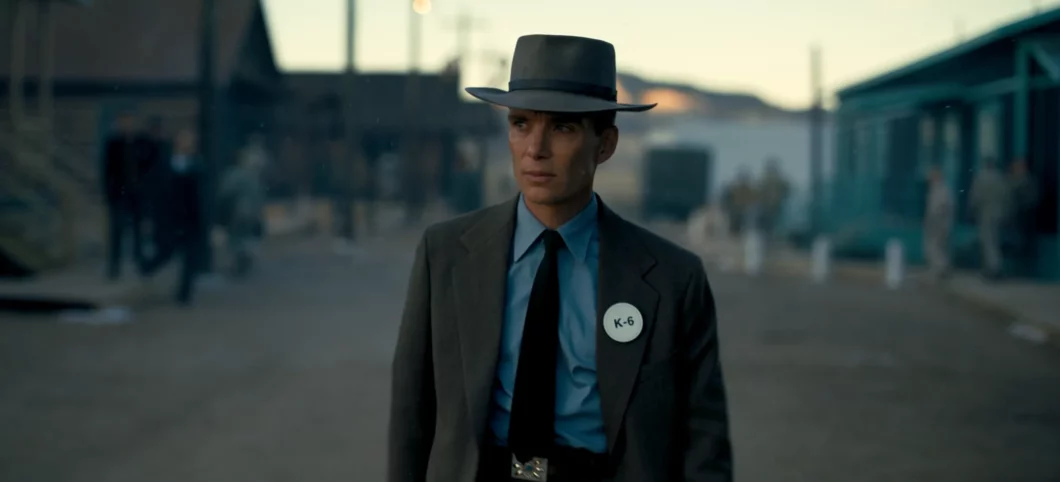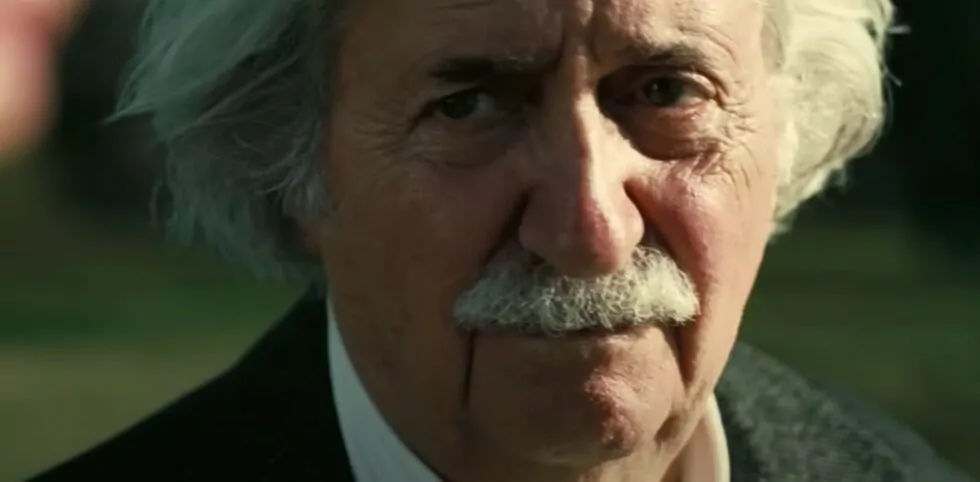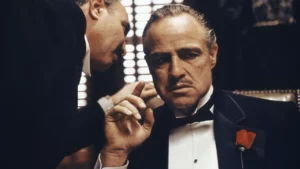
“Oppenheimer” captures the essence of a proper Christoper Nolan film and is filled with details and intricate narrative threads. It tells the story of J. Robert Oppenheimer and how he made the atomic bomb at Los Alamos. There are two types of scenes: ones with colors that show Oppenheimer’s perspective and show his early life, bomb-making, and trial. The other scenes are black and white and follow Robert Downey Jr. He seeks revenge after a test, and this runs alongside a trial. Nolan mixes history from the “American Prometheus” book, using structure and color to tell the story. The film follows Oppenheimer’s journey in order, making a compelling and visually interesting story.
The Early Life of Oppenheimer
The film “Oppenheimer” commences with a reference to the Prometheus myth, symbolizing the theme. J. Robert Oppenheimer’s struggles unfold non-linearly, with Lewis Strauss doubting his ties to communism and deteriorating relations. The narrative intertwines their trials, exploring Oppenheimer’s security clearance and Strauss’s role in McCarthyism. Oppenheimer’s university days and transformation inspired by Niels Bohr’s lecture are depicted, leading him to Göttingen, where he learns from scientists like Heisenberg amid the race to build a German bomb. Returning to the US, Oppenheimer becomes a Berkeley professor, nurturing a physics department and mentoring “Oppie’s boys.” The film portrays his growing political involvement due to WWII and his Jewish identity. This three-hour biopic weaves myth and history to unveil Oppenheimer’s complex journey.
Oppenheimer’s engagement with communism traces back to his encounter with Jean Tatlock, portrayed by Florence Pugh, at a communist gathering. Their meeting involved Oppenheimer quoting the Bhagavad Gita, later referenced during the Trinity test. Jean, a psychology student and Communist Party member at Berkeley shared the party’s goals for fair wages and refugee aid, aligning with Oppenheimer’s support for the Spanish war effort. Though not a full member, Jean introduced him to the cause, shaping his views. His ties to Jean, Chevalier, and his brother Frank’s affiliation posed trial challenges. Ernest Lawrence criticized his merging of politics and science education. Oppenheimer’s relationship with Kitty (Emily Blunt), who also left the party, grew strong, leading to their marriage following time spent together in the US and New Mexico.
The Manhattan Project
*Redacted* Groves (Matt Damon) picks Oppenheimer to lead, despite his radical past. In Los Alamos, they gather top scientists, including Oppenheimer’s students, Bethe and Teller. Tensions arise from secrecy as “Little Boy” and “Fat Man” designs take shape. Ethical dilemmas surface, heightened by Oppenheimer’s personal loss with Jean Tatlock’s death. Security, secrecy, and ethics challenge the project, influencing Oppenheimer’s choices and his impending trials.
The Trinity Test
The pinnacle of the Manhattan Project culminates in the Trinity test, a focal point. The isolated Trinity site, named after Oppenheimer and Tatlock’s admired poem, is chosen in the desert. Tension builds during the storm-delayed countdown. The blinding flash during the countdown stuns as Oppenheimer quotes “I am become death, the destroyer of worlds.” Colors, silence, then a shockwave follows, met with scientist cheers. Ludwig Göransson’s score intensifies the moment’s emotional impact. The successful test validates their creation’s power. Multiple perspectives capture the scene, emphasizing its significance.
The Bombings
The perception of atomic weapons rapidly transformed with their destructive realization. After deploying them on Hiroshima and Nagasaki, target choices ignited discussions among scientists about consequences. While most Americans and Los Alamos scientists initially backed the bombs, Oppenheimer’s satisfaction waned amidst their horrors. The film echoes the book, depicting his internal struggle during a victory speech. He envisions the aftermath’s devastation, altering his perspective to oppose further bombs and advocate responsible use. As General Advisory Committee chairman, he suggests sharing the project with Soviets to avert an arms race, dismissed by the government.
Oppenheimer’s nuclear policy efforts clash with politics. A poignant encounter with President Truman (Gary Oldman) exposes his turmoil and accountability. Despite his efforts, Teller pushes the hydrogen bomb. Failed attempts mar Oppenheimer’s reputation, subjecting him to scrutiny.
The Trials
Oppenheimer’s trials weave throughout, intertwined with prior events. The first focuses on security clearance, the second on a hearing with Strauss. Dubious evidence, including wiretaps, marks his trial led by Strauss, centered on past affiliations. Supporters like Groves and Kitty defend, but prosecution highlights connections, affair, and Chevalier’s actions. The trial strains Oppenheimer and Kitty’s relationship, with Kitty’s frustration resonating.
Post-hearing, Oppenheimer loses clearance, entering exile. McCarthyism fades, honoring his research. Strauss’s hearing exposes dislike rooted in humiliation. The hearings contrast science and politics, loyalty and inquiry, delving into Oppenheimer’s legacy and consequences.
Oppenheimer Movie Ending Explained
The movie concludes with Oppenheimer meeting Albert Einstein to discuss the potential consequences of the atomic bomb. This ongoing conversation has been a source of tension for Oppenheimer. The meeting deeply unsettles him as he realizes that his creation has slipped out of his control. Once the bomb is assembled, Oppenheimer loses the ability to prevent its use, and the eventual global ownership of this power threatens worldwide destruction. Oppenheimer’s personality has earned him followers, showcasing the Cult of Personality in various aspects of his life, from his relationships to his involvement with the Communist Party, teacher union meetings, and work at Los Alamos.

Einstein foresees that the government will exploit and later discard Oppenheimer, paralleling historical events where he faced banishment before being redeemed. The latter part of the film portrays how public sentiment turns against him. The film’s conclusion centers on Oppenheimer’s realization of the irreversible chain reaction he has initiated. The recurring motif of raindrops and puddles morphs into images of nuclear sites and missiles, symbolizing the perilous course he has set in motion.
The film consistently explores the theme of escalation, highlighting the potential for even deadlier weapons to emerge from the bomb’s creation. Oppenheimer’s charisma and the Soviet Union’s rise create an atmosphere of uncertainty. The film also delves into ethical debates around sharing atomic secrets with the Soviets, questioning whether it could prevent a monopoly on nuclear power.
Strauss embodies paranoia and fear-driven actions. His fixation on Oppenheimer leads him to manipulate events and tarnish Oppenheimer’s reputation, mirroring global reactions to nuclear proliferation driven by fear.
Oppenheimer acknowledges the blood on his hands, which contrasts with Truman’s power-focused perspective. His transformation from an academic to an architect of global destruction underscores the gravity of his achievement. The film underscores the ethical dilemmas surrounding nuclear weapons and the potential for worldwide catastrophe.
The Oppenheimer-Einstein dynamic
Einstein’s conversation with Oppenheimer by the pond is a crucial moment, representing the only exchange between peers who truly understand the implications of their work. Powerless to change the future, they embody the theme of inevitability. Oppenheimer’s realization of the unleashed uncontrollable force mirrors humanity’s history of weapon advancement. The film concludes on a haunting note, emphasizing the profound impact of the atomic bomb and leaving viewers with a sense of introspection about humanity’s capacity for destruction and progress.
The film’s final scene has Oppenheimer contemplating the pond, presenting a vivid mental image of a nightmarish apocalypse. This imagery underscores the pervasive fear in the story, accentuating the potentially catastrophic consequences of nuclear warfare. The ultimate vision of Earth ravaged by nuclear explosions serves as a stark reminder of the peril humanity faces and serves as a cautionary tale. Despite the complexities of Oppenheimer’s narrative, involving the necessity of creating nuclear arms and the aftermath of their use, the film underscores the urgency of preventing their misapplication, hinting at the potential for global devastation. As Oppenheimer reflects, “When I came to you with those calculations, we thought we might start a chain reaction that would destroy the entire world… I believe we did.”



